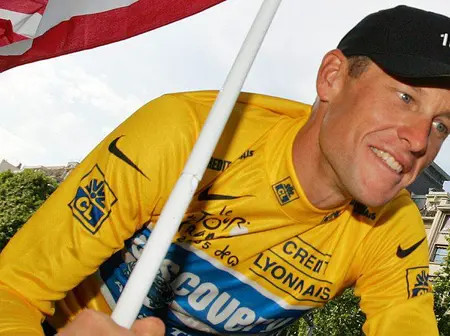Lance Armstrong, born Lance Edward Gunderson on September 18, 1971, in Plano, Texas, is an American former professional road racing cyclist.
Raised primarily by his mother, Linda Walling, after his biological parents divorced when he was an infant, Armstrong’s early years were marked by resilience and athletic promise.
Linda, only 17 at the time of his birth, later married Terry Armstrong, who adopted Lance, though that marriage also ended in divorce.
This single-parent upbringing instilled in him a fierce determination that would define his career.
Beyond cycling, Armstrong became a global icon as a cancer survivor, founding the Livestrong Foundation to support those battling the disease.
Lance grew up with two siblings, namely Larry Armstrong and Sonnie Michaela Gunderson.
However, not much is known about the two as they live a private life compared to their famous brother.
At age 12, Armstrong competed as a swimmer for the City of Plano Swim Club, placing fourth in the Texas state 1,500-meter freestyle event.
Drawn to the challenge of multisport competition, he transitioned to triathlons, becoming the top-ranked amateur in the 19-and-under category by 1987-1988 and securing national sprint-course triathlon championships in 1989 and 1990 at ages 18 and 19.
Recognizing cycling as his strongest discipline—and motivated by its Olympic status—he turned professional in 1992 with the Motorola Cycling Team after winning the U.S. National Amateur Road Race Championship in 1991.
Early pro years brought flashes of brilliance: a stage win in the 1993 Tour de France, the 1993 UCI Road World Championship, and victories in the Tour DuPont in 1995 and 1996.
Tragedy struck in October 1996 when, at 25, he was diagnosed with advanced metastatic testicular cancer that had spread to his lungs, abdomen, and brain.
Given a mere 40% survival chance, Armstrong underwent aggressive chemotherapy, brain surgery, and an orchiectomy, crediting a modified treatment regimen with preserving his lung capacity for future racing.
Defying medical odds, he returned to competition in 1998 with the U.S. Postal Service team, embarking on an unprecedented dominance in the Tour de France from 1999 to 2005.
Post-2005, he briefly retired, ran marathons, and dabbled in triathlons before a 2009 comeback with Astana and RadioShack, racing until his final retirement in 2011 amid mounting doping investigations.
His post-cycling life shifted to podcasting, venture capital investments—like an early stake in Uber that yielded millions—and advocacy, though forever shadowed by the 2012 United States Anti-Doping Agency (USADA) report branding him the architect of cycling’s most elaborate doping scheme.
Prior to his cancer battle, Armstrong claimed the 1993 UCI Road World Championship, etching his name as the youngest winner at 21, along with the 1995 Clásica de San Sebastián, the 1996 La Flèche Wallonne, and back-to-back Tour DuPont general classifications in 1995 and 1996, plus multiple stage wins therein.
His 1993 Tour de France stage victory and 1995 stage triumph further showcased his emerging prowess.
The pinnacle—and subsequent nadir—was his string of seven consecutive Tour de France overall victories from 1999 to 2005, a feat that shattered records for consecutive wins and elevated cycling’s global profile while inspiring cancer survivors worldwide.
These triumphs included 25 individual stages, four combativity awards, and the highest average speed ever recorded for the full Tour in 2005 at 41.7 km/h.
He also secured the 1998 Tour de Luxembourg general classification and thrice won the Thrift Drug Triple Crown of Cycling between 1992 and 1994.
A 2000 Olympic bronze medal in the individual time trial rounded out his honors.
Following the USADA’s 2012 findings of systematic doping—including EPO, blood transfusions, and testosterone use—Armstrong forfeited all results post-August 1998, including the Tours, Olympic medal, and associated prizes totaling millions in bonuses.
Despite the stripping, his pre-1998 accolades endure, and his Livestrong Foundation raised over $500 million for cancer support, underscoring a legacy of inspiration amid infamy.

Leave a Reply